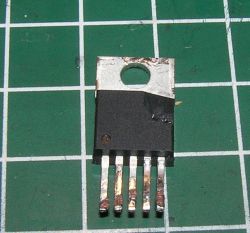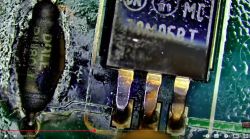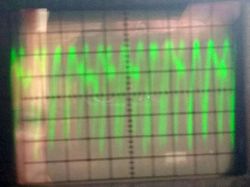My fears stem from this:
https://www.elektroda.pl/rtvforum/topic3434421.html eurotips wrote: The factory ones are linear and only thanks to the multiturns used, you can set anything with them. The linearity of regulation on these peers is terrible. There you need a potentiometer with characteristics similar to logarithmic, unfortunately you do not find such potentiometers at reasonable prices.
eurotips wrote: As for the minimum, you have 1.2V, you have 3.0V in half
You have 5V for 3/4 turn and the rest of the small part is the rest, i.e. the 5-30V range.
Szyszkownik Kilkujadek wrote: But it is about the characteristics of the potentiometer, it would have to be a miracle of the M + N type used in audio, something that nobody produces in series.
Added after 6 [hours] 12 [minutes]: Voltage regulation checked.
For the 10k potentiometer there is no change from halfway up
(we're already half full of tension)
The situation was improved by a 14-15k resistor in parallel with the potentiometer.
There is a place for such an SMD resistor on the bottom of the board. The 10k potentiometer is used to regulate thicker values, while the 1k potentiometer allows for 3V adjustment, which is acceptable.
I set 1k in the middle, with the 10k potentiometer I set "roughly" the voltage that interests me and with this 1k I choose the value precisely.
As for the current regulation, the precise one does not work at all by. the diagram shown earlier, besides, there is probably an error - the current, voltage description changed. The precise regulation for the current allows you to operate with currents in the vicinity of 0 - 1A.
I have it connected like this:
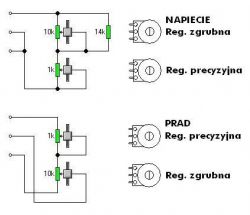
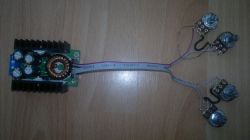
Oh, for the curious:
The converter is powered by a 24V / 5A switching power supply (overclocked to 27.5V).
Panel meter powered from a separate 5VDC source, also supplying a small fan.
Everything works.

